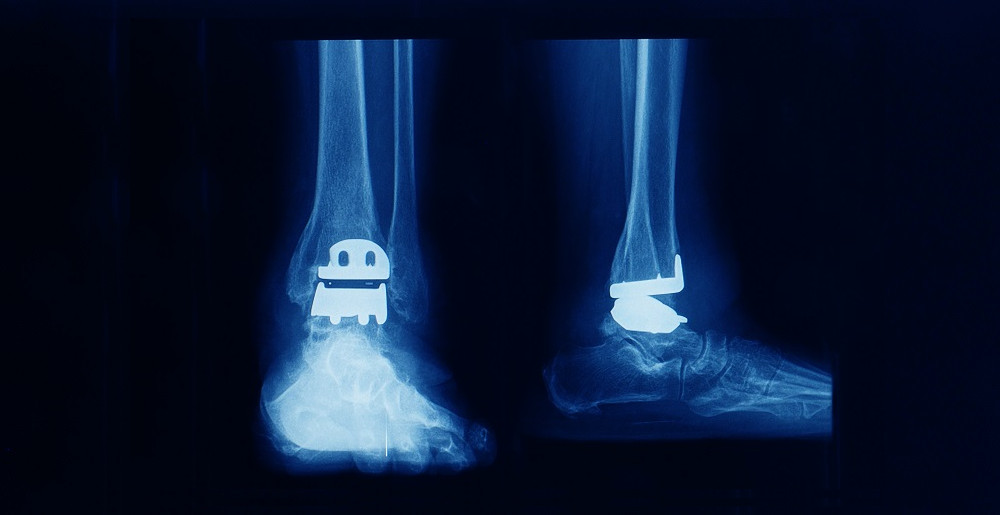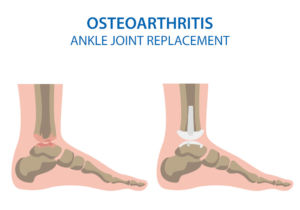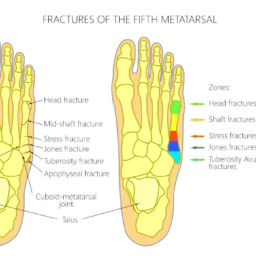
A total ankle joint replacement, also known as arthroplasty, is often used to treat rheumatoid arthritis in the ankle. The surgical procedure is designed to improve range of motion and joint stability while reducing ankle pain.
What Is an Ankle Joint Replacement?
Arthroplasty is a surgical joint replacement procedure. Damaged sections of the ankle are removed and replaced with metal or plastic prosthetics. The new parts are used to move your ankle like the original joint. This procedure is typically used only with people who have severe ankle pain that affects their quality of life.
What Ankle Replacement Surgery Can Treat
In most cases, total ankle replacement surgery is used as a treatment for ankle arthritis. Arthritis occurs when the cartilage over the bone of the joint starts to change, becoming rougher and thinner.
This type of arthritis can occur due to age or from simple wear and tear. Certain health conditions or repeated fractures or injuries to the ankle can also cause arthritis.
A few of the symptoms associated with ankle arthritis include the following:
- Trouble walking
- Joint swelling
- Joint pain
Basic treatments for ankle pain can often be used before surgery. This might include orthotics, medications, physical therapy, and other conservative treatments.
However, if the arthritis is severe, targeted treatment is needed for the overall health of the bone and cartilage of the ankle. In that situation, total ankle replacement may be needed.
Who Is Not a Candidate for Ankle Joint Replacement Surgery?
Not everyone with ankle arthritis finds ankle replacement to be the best option. If your ankles are very unstable or deformed, it may not be the right option. In addition, replacement may not be appropriate for those who are obese or who have diabetes, bone infections, or circulatory problems.
When you visit a healthcare provider, they will do X-rays and a physical exam to determine whether ankle replacement is right for you. If it is not, there are other forms of ankle surgery to consider. Ankle fusion may be right for some patients with ankle issues.
What Occurs During Joint Replacements?

- A nerve block or general anesthesia is given.
- An incision is made to the front of the ankle.
- The degenerate cartilage and bone are removed.
- The joint surface is prepared for the prosthetic parts.
- The parts are placed and the joint range of motion is checked.
- Other procedures will be done to ensure proper alignment of the foot and ankle.
While an ankle replacement is often inpatient, you will likely stay in the hospital for only one night. In some cases, outpatient surgery is possible. Make sure to talk to your podiatrist about the options avilable.
What Are the Risks of Total Ankle Arthroplasty?
Ankle replacements are designed to offer better stability and strength in the ankle while preserving your range of motion. The parts inserted in the procedure move just like the original joint. This relieves pain and lets you walk normally while enjoying an active lifestyle.
In many cases, ankle replacement is chosen over ankle fusion, which is called arthrodesis. With fusion, the bones are joined and this limits the range of motion. This creates less flexibility in how you walk and may cause arthritis in other joints. A medical professional can help you determine which treatment meets your needs.
Most people have no complications from ankle replacement. However, there are potential risks of blood clots, infection, loosening replacement parts, blood vessel or nerve damage, healing problems, and wearing of replacement parts over time.
What Recovery Is Like After Ankle Replacement Surgery
In most cases, it takes around six to 12 months to recover from ankle arthroplasty. A walker or crutches will often be used in tandem with a cast or splint. This helps keep the joint from moving during the healing process. You may also need to make medications to prevent blood clots.
Physical therapy can help you regain mobility after surgery which could include:
- Gradually increasing weight-bearing activities
- Gait training to help with standing and walking
- Stretches to help flexibility and range of motion
- Massage to cut down on swelling
- Strengthening exercises
In addition, your surgeon may ask you to come in for follow-ups and scans after surgery is complete. This is important to ensure your ankle heals the way it should.
Final Thoughts
Many people suffer from pain associated with ankle arthritis. Ice, rest, elevation, and other home treatments can often help with joint pain and stiffness. When these therapies do not work, surgery is another option to treat ankle arthritis. Taking good care of your joints can reduce the chances you will need surgery. When searching for local foot doctors near you consider one of our certified podiatrist.
We are located in South East and West Florida, with foot clinics in Palm City, Vero Beach, Imperial Point, Pembroke Pines and Fort Lauderdale. For a complete list please visit our locations page.






